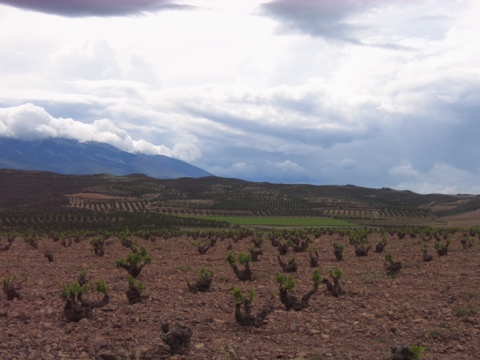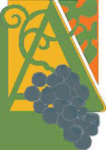lummi island wine tasting april 14 ’17
(note: some photos will enlarge when clicked)
Bread this week
 Sonnenlumenbrot (aka Sunflower seed bread)– Made with bread flour and freshly milled coarse rye meal and loaded with toasted sunflower seeds, a little barley malt syrup which is a traditional ingredient for german breads for a little sweetness. Makes for a nice crusty bread -$5/loaf
Sonnenlumenbrot (aka Sunflower seed bread)– Made with bread flour and freshly milled coarse rye meal and loaded with toasted sunflower seeds, a little barley malt syrup which is a traditional ingredient for german breads for a little sweetness. Makes for a nice crusty bread -$5/loaf
Honey Wheat with Lemon and Poppy seeds – half bread flour and half fresh milled whole wheat, a little honey for sweetness and some poppy seeds and fresh lemon peel for added flavor. A great all around bread that would be a nice accompaniment for Easter dinner- $5/loaf
And a traditional Italian Easter bread for pastry…
Colomba di Pasqua (Easter Dove): A traditional Italian Easter cake similar to Christmas panettone. Made with plenty of flour, eggs, sugar and butter as well as candied orange peel and topped with a crunchy almond and hazelnut glaze and pearl sugar. The dough is baked in a dove shaped baking form. Limited supply so order early! $5/loaf
Story of Stuff Revisited
It’s been almost fifty years since the first “Earth Day.” A Singular Event in our history, it was a culmination of a lot of threads from the Sixties, a broadly shared acknowledgment that our Planet was Finite. This new awareness included a constellation of new ideas that all called for a rethinking the Industrial Economic system. A lot of us bought into these ideas and dedicated careers to them, hoping this new view would gain momentum, and indeed there were notable steps forward to protect our Air, our Water, our Endangered Species, and natural habitats. We recognized that environmental destruction is largely caused by the failure of markets to include environmental spillover effects in production and consumption decisions. And over the past forty years, significant progress has been made toward establishing constraints for economic and political decision frameworks that will restore and maintain a healthy, beautiful, productive, and sustainable environment.
But there has always been Resistance from Capital. Just as Capital has always been at War with Labor, Capital has also always been at War with Environment. And the most basic reason for this is that environmental resources are for the most part what economists have labeled “Common Property Resources.” Our air and water are primary examples. The essential characteristic of CPR’s is that there is no defined ownership right to any particular bundle of them. Do we have the right to smoke wherever we want, or do we have the right to clean air wherever we go? So, while there have long been established markets for resource extraction rights, which are tied to very specific locations, there have rarely been markets for waste dumping rights. Nevertheless, there has been an enormous amount of public debate and legislation since Earth Day about how better to entrain the economic decisions of producers and consumers with the extra-market consequences of their actions.
One Big Message of the Trump (hopefully very short-lived) Era is that Those Days Are Over. So One Big Question on the National Floor at the moment is whether we will allow this unlikely Alliance of Oligarchs, after having handily stolen our recent national “Election,” to wipe out forty years of hard-fought environmental, corporate, and civil rights legislation as if it had never happened.
Grenache
 By happy coincidence, this week’s tasting happens to include two blends dominated by the grape varietal known in France as Grenache, in Spain as Garnacha, and in Catalan as Garnatxa. (around Barcelona– Catalans do not consider themselves “Spanish”). It is known for its bright notes of raspberry and strawberry; And though it has been widely planted around the world, grenache is essential to many of the world’s most famous wines, including snooty Châteauneuf-du-Pape and Lirac, its charming counterpart just to the south across the Rhone River.
By happy coincidence, this week’s tasting happens to include two blends dominated by the grape varietal known in France as Grenache, in Spain as Garnacha, and in Catalan as Garnatxa. (around Barcelona– Catalans do not consider themselves “Spanish”). It is known for its bright notes of raspberry and strawberry; And though it has been widely planted around the world, grenache is essential to many of the world’s most famous wines, including snooty Châteauneuf-du-Pape and Lirac, its charming counterpart just to the south across the Rhone River.
While in most Rhone blends syrah is dominant, grenache provides solid warmth and suppleness with its relatively low acidity, and mourvedre can provide colour, structure and antioxidant properties, depending on seasonal variables. All three varietals are found in a broad geographic band from central Spain to eastern France along the Mediterranean, and are blended in every possible proportion. The big takeaway here is that syrah and grenache are broadly complementary in many proportions and seasons. In this weekend’s tasting, however, you have a rare opportunity to explore two examples of grenache mostly all by themselves…a rare opportunity!
This week’s wine tasting
Kiona Chenin Blanc ’16 Washington $12
This off-dry Washington Chenin Blanc has refreshing aromas of tart green apples and fresh cut straw, with crisp tropical flavors emphasized when served chilled.
Borsao Rose ’15 Spain $9
Spicy aromas and flavors of ripe red berries, orange, and pungent flowers; nicely concentrated and supple,gaining weight with air, picking up bitter cherry and melon notes and a lingering red fruit liqueur quality.
Borsao Garnacha ’15 Spain $11
From 100-yr-old vines; heady, perfumed bouquet of ripe red and dark berries, incense and candied flowers; intense raspberry liqueur and cherry-cola flavors blending power, depth and finesse beyond its modest price point.
Idilico Garnacha ’13 Washington
Moderately saturated, showing flavors of cherry, strawberry, game and licorice, with flint and rock notes on the inviting nose. Graceful, pliant and sweet with a lingering, firm, ripely tannic finish.
Antinori Villa Antinori ’12 Italy $23
Rich and sumptuous in the glass, with considerable richness, the 2012 shows the darker, more voluptuous side of Chianti Classico. Even with all of its intensity, the 2012 retains considerable freshness.
If you enjoyed this post, please consider to leave a comment or subscribe to the feed and get future articles delivered to your feed reader.

 2072 Granger Way
2072 Granger Way